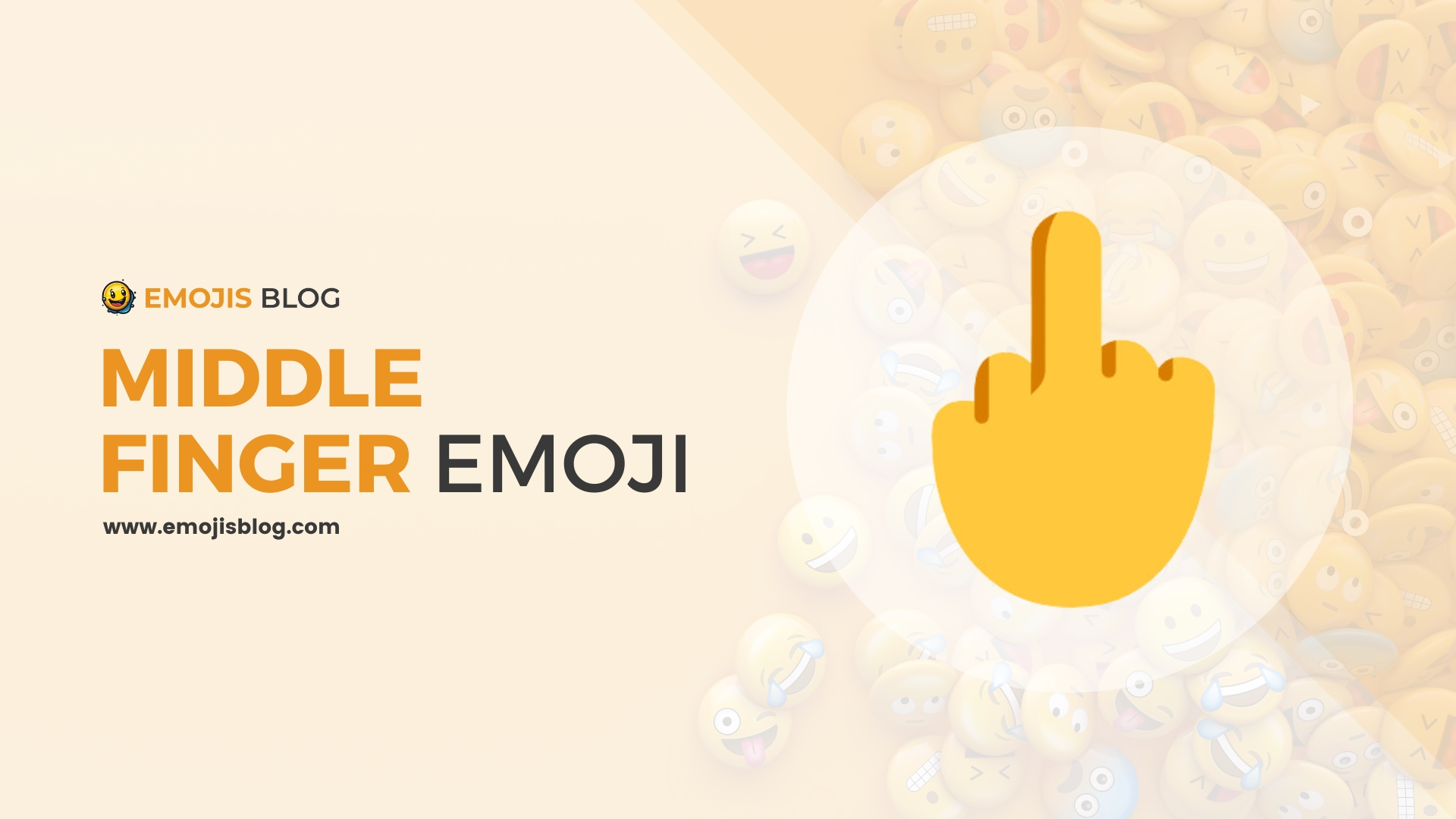What Does The Middle Finger Emoji Mean 🖕
🖕
The Meanings Of Middle Finger Emoji 🖕
The middle finger emoji 🖕 is a digital representation of the physical gesture of extending the middle finger upwards, which is widely recognized as a sign of disrespect, defiance, or anger. Originating from varied historical contexts, this emoji carries a strong emotional charge and is used in digital communication to express a range of feelings from frustration and annoyance to rebellion and humor, depending on the relationship between the parties and the context of the conversation. Its usage demands careful consideration of the audience and setting due to its potential to offend, making it a powerful but risky choice in expressing oneself online.
Technical Information
| Feature | Description |
|---|---|
| Name | Reversed Hand with Middle Finger Extended |
| Unicode Codepoint | U+1F595 |
| HTML Code | 🖕 |
| Category | People & Body (hand-fingers-partial) |
| Subcategory | hand-single-finger |
| Shortcodes | :middle_finger:, :fu: (on some platforms) |
| Skin Tone Variations | Yes, available in a range of skin tones (typically 5 variations) |
Understanding the Middle Finger Emoji 🖕
The middle finger emoji, often represented by a hand gesture with the middle finger extended upwards, is a digital symbol that has permeated various aspects of online communication. This emoji is widely recognized and used across different platforms, including social media, messaging apps, and forums. Its meaning, cultural significance, and usage are as diverse as the contexts in which it appears. This article delves into the origins, implications, and etiquette surrounding the middle finger emoji.
Origins and Symbolism
The gesture of extending the middle finger upwards has a long and varied history, tracing back to ancient times. Historically, it has been a symbol of disrespect, defiance, or insult. The physical gesture translates quite directly into its digital counterpart, the emoji, which was introduced to emoji keyboards to offer a broader range of expression in digital communication.
Cultural Significance
The cultural significance of the middle finger emoji can vary significantly around the world. In many Western cultures, it is considered offensive and is used to convey anger, frustration, or contempt towards someone. However, its interpretation can differ based on context, relationship between the individuals involved, and regional sensitivities. In some contexts, it might be used among friends in a jesting manner, while in others, it can be a serious sign of disrespect.
Usage in Digital Communication
The use of the middle finger emoji in digital communication adds a layer of complexity to interpreting messages. It can serve multiple purposes:
- Expressing Strong Emotion: It’s often used to express anger, annoyance, or rejection in a more visually impactful way than words alone could convey.
- Humor and Sarcasm: Among friends or in less formal settings, it might be used jokingly or to tease, assuming all parties understand the intent.
- Rebellion or Defiance: In political or social contexts, it can be a symbol of protest or defiance against authority or societal norms.
Etiquette and Considerations
Given its potential to offend, it’s crucial to consider the context before using the middle finger emoji. Here are some etiquette tips:
- Know Your Audience: Ensure the person you’re communicating with will understand and not be offended by the emoji’s use.
- Consider the Platform: Using this emoji might be more acceptable in casual or private communication than in public or professional settings.
- Intent vs. Perception: Remember that the way you intend the emoji might not be how it’s perceived. Misunderstandings can occur, especially in the absence of facial cues and tone of voice.
Conclusion
The middle finger emoji is a powerful tool in digital communication, capable of conveying a range of emotions and messages. However, its use comes with the responsibility of considering the context, audience, and potential implications. As digital communication continues to evolve, understanding the nuances of such symbols becomes increasingly important in maintaining respectful and effective online interactions.

